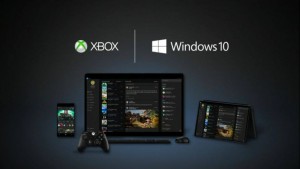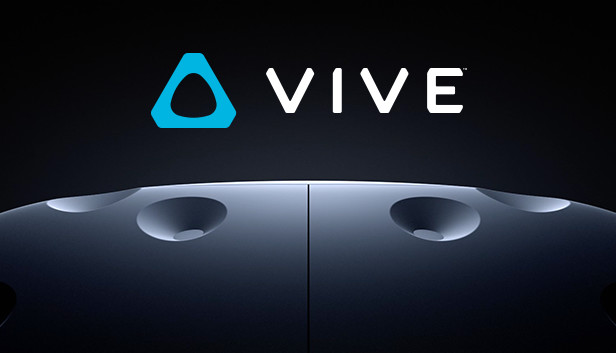Everyone knew that, sooner or later, the Oculus Rift head-mounted display (HMD) was going to have some serious competition. Few would have guessed, however, that such a rivalry would come so early on and from a company that had once closely collaborated with creator Oculus VR, Valve. It was over a year ago now that virtual reality (VR) fans got their first glimpse at the HTC Vive, a brand new PC-based HMD that saw the Taiwanese smartphone maker partner with the Half-Life developer and its new SteamVR system.
But the pair didn’t just have a HMD to rival the Oculus Rift; SteamVR included several innovations and breakthroughs that were notably lacking in any other HMD at the time. For the first time for a consumer-focused kit, users were able to physically walk around VR environments in what’s been dubbed ‘Room Scale VR’, provided they stayed within the limits of two tracking stations. Position tracked controllers also brought hands into the experience with a high degree of accuracy. Oculus VR may well have caught up since that announcement, but the HTC Vive is the only VR kit that will be offering all of this on day one. Of course, it comes at a high price.
Purchasing an HTC Vive
The HTC Vive costs some $799 USD/£689 GBP or, with shipping included $829/£746. It’s hard to escape just how much money that is, especially considering that it’s $200 more than the $599 Oculus Rift. But there’s added value in the box. Crucially, the HTC Vive comes with all you need to get started with Room Scale VR. Along with the HMD itself, then, you’ll get two Lighthouse base stations to track your movements, and two controllers to bring your hands into VR too. There are three free titles to boot too, including Owlchemy Labs’ Job Simulator, Northway Games’ Fantastic Contraption, and Google’s Tilt Brush. What it won’t get you, however, is a PC capable of running it.
Getting a VR Ready PC
The minimum specifications for the HTC Vive are as follows:
GPU: – NVIDIA GeForce® GTX 970 / AMD Radeon™ R9 290 equivalent or greater
CPU: – Intel® i5-4590 / AMD FX 8350 equivalent or greater
RAM: – 4GB+
Video Output: – HDMI 1.4 or DisplayPort 1.2 or newer
USB Port: – 1x USB 2.0 or greater port
Operating System: – Windows 7 SP1 or newer
With that in mind, you can go out and select a PC that either meets or exceeds these specs, or build one for yourself. If you want to be extra sure you’re buying the right type of rig, however, HTC has partnered with Alienware, HP, and MSI to offer Virtual Reality Certified machines. These are a set of PCs and laptops that either meet or exceed the specs, so you don’t need to worry about individual components. Alienware is offering its Area 51 PC, while HP is promoting its ENVY line. MSI, meanwhile, is touting its laptops as VR ready. Prices for these machines start at around $1699.99, though splashing out for better models will obviously mean increased performance.
Xbox One Compatibility

Just like the Oculus Rift, the HTC Vive will have some functionality with Microsoft’s Xbox One console. Though never outright confirmed, it’s largely assumed that this will concern Game Streaming, much like it does on Oculus VR’s device. This will be available for people only with both the console and Windows 10 PCs. It allows you to play Xbox One titles on a giant screen within a VR living room of sorts. It’s not even close to native Xbox One support, or course, but it’s well worth checking out if you have all three ingredients.
Top Titles
Final Approach – Phaser Lock Interactive’s debut VR project is shaping up to be one of the most unique experiences yet seen on HTC Vive. You’re put in charge of airports in a wide variety of locations, navigating aircraft with the help of your motion controllers. Crucially, Final Approach also lets you step inside more of the action, taking part in other activities such as helping to put out fires. This is also coming to the Oculus Rift with Oculus Touch support, but the HTC Vive is the only place you’ll be able to play it in the first half of 2016.
The Lab – The Lab was announced very recently, but has quickly made its way towards the top of this list. Why? For two very good reasons. The first is that it’s made by Valve itself, and any software from the company that gave you Half-Life, Left 4 Dead, and Portal is worth a look, tech demo or otherwise. It’s also set within the Portal universe itself, a world that has grown to become one of the most recognisable in videogaming over the past decade. The second is that VRFocus’ hands on at GDC was one of the most promising of the show. On top of that, it’s set to be release for free, which obviously helps.
Giant Cop – Giant Cop may still be a little ways from release, but early demos of the title suggest that developer Other Ocean Interactive is onto something big, quite literally. You take on the role of an enormous police officer, patrolling Micro City. Any crimes you spot can be prevented by simply reaching down, picking up the offending criminal, and tossing them in a funnel located about your prison. Better yet, Giant Cop lets you create your own brand of chaos as you smash vehicles and swipe aside citizens.

The Gallery – When it was first announced, it seemed that Cloudhead Games’ The Gallery was slightly ahead of its time. The developer wanted to create a world in which you could explore everything and pick up objects realistically. With the reveal of the HTC Vive, the studio could finally make all of that possible. As such, The Gallery looks to be one of the best adventures coming to VR as a whole. Cloudhead Games has created its own teleportation-based locomotion system to help you navigate through its imaginative worlds.
Elite: Dangerous – Although Room Scale is the HTC Vive’s biggest feature, it’s not mandatory. It’s perfectly possible to sit down, grab a standard controller, and play a variety of VR titles. If that’s what you’re looking for then Frontier Developments’ Elite: Dangerous comes highly recommended as an enormous, sprawling space epic that’s set to offer even more content with its Elite Dangerous: Horizons season of updates.
Controllers
By now you’ve probably figured out that the HTC Vive comes with a pair of position tracked controllers that will be essential to many of the experiences you can find on it. But you’re not restricted to these devices. As mentioned above, some videogames will still rely on gamepads instead of motion controls. Vehicle-based videogames, for example, are still best played in the traditional sense, so consider picking up a PC-compatible pad if you don’t have one already.
Steam

Whereas Oculus VR is prepping its own store front for Oculus Rift compatible content, Valve already has the most popular digital videogame store on the planet in Steam. In recent weeks Steam has been updated to include a dedicated area for VR compatible titles, listing off which controllers are supported among other important details. The platform can also be accessed within VR itself, so you want need to leave the HTC Vive to purchase new content. HTC is also preparing a digital store named Viveport, though this is designed for markets that don’t have access to Steam.















